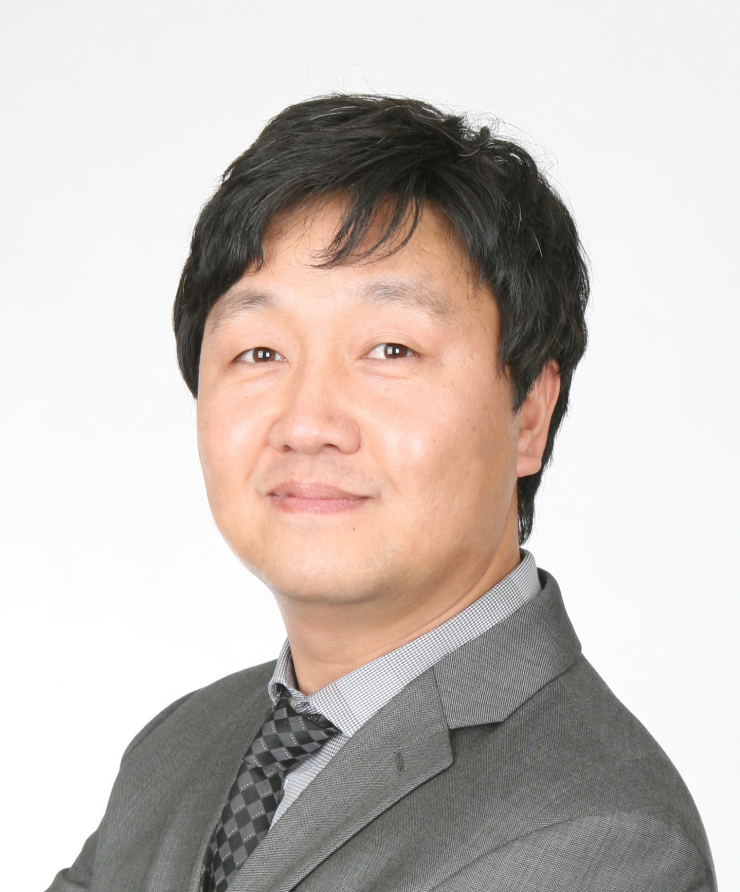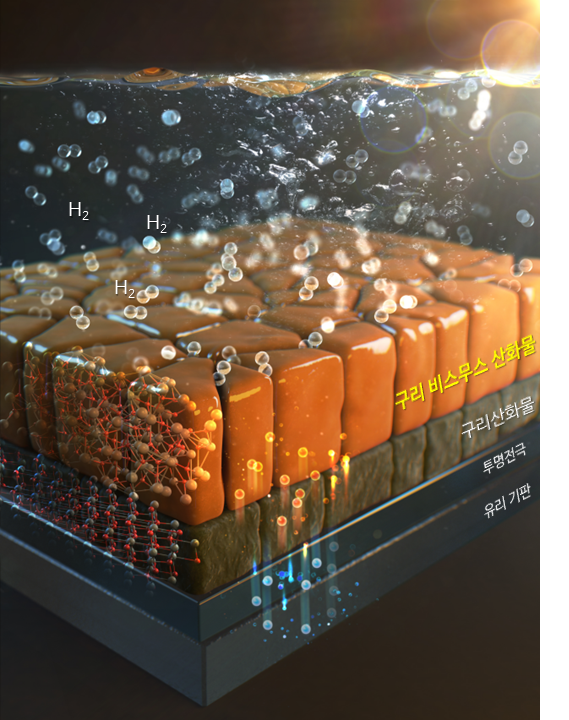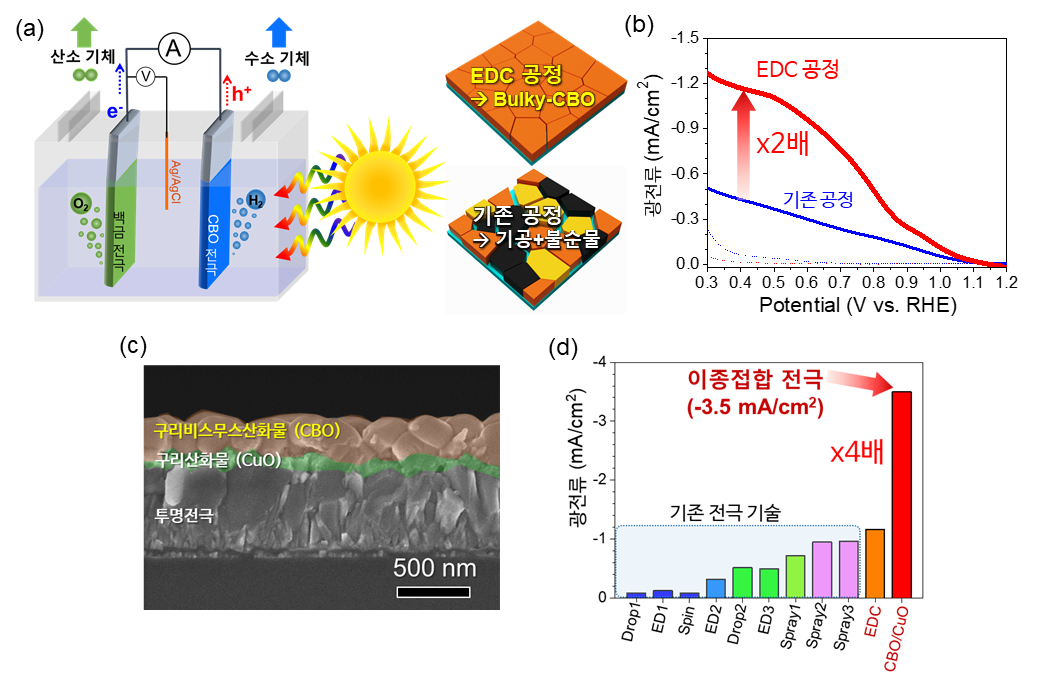- About Ajou
- Admission
- Academics
- Research
-
International
International
- Campus Life
-
News and Event
News and Event
- AUT
Major Research Result
NEW Prof. Cho In-sun’s team discovers higher-efficiency photocathode that converts sunlight into hydrogen
- 2021-02-23
- 4697

Prof. Cho In-sun (Dept. of Materials Science and Engineering, pictured) and his team have discovered a higher-efficiency photocathode capable of producing hydrogen energy from sunlight. The team’s discovery is expected to lead to a variety of economic applications in areas of energy technology where photovoltaic hydrogen generation is needed, such as solar cells and fuel cells.
The team’s study on the new photocathode, at least four times more efficient than existing technology, was published in the November issue of Nano Energy (IF = 16.602) and entitled, “High-performance bulky crystalline copper bismuthate photocathode for enhanced solar water splitting.” Listed as authors were Dr. Shin Seong-sik of the Korea Research Institute of Chemical Technology; Seo Gab-kyung and Kim Bit-na, both first authors and currently enrolled in the master’s program at Ajou University; and Hwang Sung-won, a doctoral candidate at Ajou University.
The depletion of fossil fuel resources and climate change have led to growing demand for sustainable energy, including solar water splitting technology that generates hydrogen for fuel from sunlight, all without carbon emissions. Researchers working in this field, however, have struggled until recently to improve the efficiency of that process to the extent required for commercialization. Interest has been growing in affordable photo-electrodes capable of absorbing sunlight with great efficiency to generate electric charges.
Research on photo-electrode materials has so far been focused on photoanodes capable of generating oxygen from oxides. Interest in photocathodes capable of generating hydrogen directly from water splitting has been comparatively limited. Prof. Cho’s team, however, broke new ground by seizing on a crystalline copper bismuthate photocathode (CuBi₂O₄).
Copper bismuthate is the optimal material for photocathodes as it is readily available on the surface of the earth and obtaining it exerts little environmental impact. It also boasts a conduction band conducive to water splitting, an extremely low band gap energy level (1.6 to 1.8 eV) and a high internal voltage (> 1V), raising the theoretically potential photocurrent level to as high as 29 mA/cm². In practice, however, it has been difficult to achieve that potential due to the inferior quality of the actual film that limits electric charge mobility.
Prof. Cho’s team found a solution to this problem in the evaporation-decomposition-controlled (EDC) method for producing better-quality films. The EDC process, designed to produce affordable solutions, controls the speed at which the solvent evaporates in the pre-annealing process so as to regulate the density and speed of crystalline grain growth. This process helps produce a dense film consisting of large particles, which significantly improves the mobility of electric charges and doubles the amount of photocurrent obtained. Compared to conventional films produced by electrophoresis or spray-coating, the EDC method increases the film’s photocurrent efficiency fourfold.
Prof. Cho’s team was able to demonstrate a high photocurrent density of 3.5 mA/cm2 under standard sunlight conditions by coupling the copper bismuthate photocathode with a copper oxide (CuO) nano-underlayer. The photocurrent density is the highest reported to date.
Prof. Cho states: “We still need to further improve efficiency and stability and increase the film’s surface in order to make it viable on the market. We expect additional research will lead us to find ways to improve the productivity and economicity of solar water splitting.”
He adds: “Our recent discovery can be expanded into a process for synthesizing various oxide semiconductor films, and may have useful applications in other areas of energy technology, including solar cells and fuel cells.”
The study was undertaken with support from the Ministry of Science and ICT and the National Research Foundation of Korea’s support program for experienced researchers.

Diagram of the double-bound (CuBi₂O₄ and CuO) photocathode made with the EDC process
구리 비스무스 산화물 | CuBi₂O₄ |
구리산화물 | CuO |
투명전극 | Transparent electrode |
유리 기판 | Glass substrate |

Effect of the CuBi2O4 film made with the EDC process
(a) 산소기체 수소기체 백금전극 CBO전극 | (a) Oxygen gas Hydrogen gas Platinum electrode CBO electrode |
EDC 공정 -> Bulky CBO 기존 공정 -> 기공 + 불순물 | EDC process à Bulky CBO Conventional process à Porous + polluted |
(b) 광전류 | (b) Photocurrent |
(d) 이종접합 전극 기존 전극 기술 x 4배 | (d) Double-bound electrode Conventional electrode x4 |
